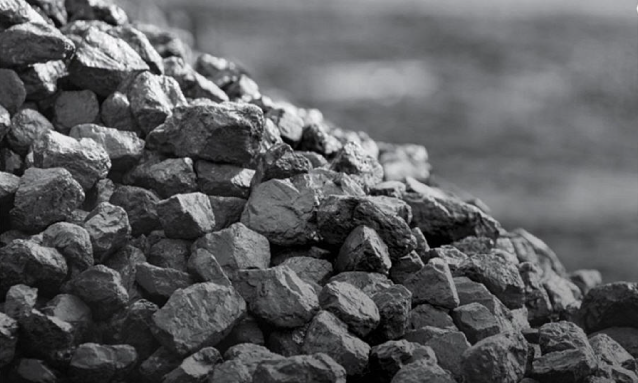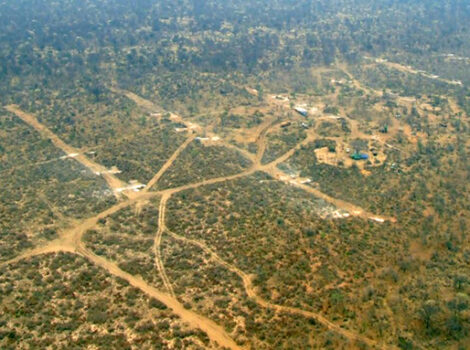
As the demand for coal is currently at an all-time high, Morupule Coal Mine (MCM) will have its piece of the pie as the mine has received increased global and regional enquiries. MCM General Manager (GM) Edwin Ellias told Mmegi’s BusinessMonitor that they recently entered into talks with several potential buyers as Botswana coal is in high demand.
“We have lots of coal traders who have been sending enquiries, MCM has been identified as a potential solution. We have a lot of countries lined up, and we are exploring potential partnerships with them. We believe we will be able to harvest this opportunity,” he said.
MCM recently signed two contracts to export P54 million worth of coal to Asia and P190 million worth of coal to Europe through Maputo, Mozambique. In addition, they are also in talks with Poland to export coal to their country.
“We are selling to coal traders who are targeting the European markets. We are not specific to any country and are currently selling to Glencore, which supplies European markets. Our clients are mostly in Europe and Asia,” he said.
MCM is currently exporting to Namibia, South Africa, and Zimbabwe. COVID-19 has completely reshaped global coal markets as coal is expected to be the next major source of power generation. To meet the demand, the GM said they are working on ramping up production. The mine is in plans to build an additional plant.
“We are currently in an optimisation drive to double our capacity with 10 million tonnes per annum. We believe if we can push ourselves, we will be able to capitalise on the opportunity. That is possible and can be done in the shortest time possible. The board has challenged us to accelerate these plans so that we don’t miss out on the opportunity,” he said.
Botswana’s coal industry: Russia/Ukraine war and the rise of the phoenix
The past 20 years have seen increased pressure from environmentalists across the world on global warming issues and the use of dirty fuels like coal in generating electricity across the world.
Due to the pressure, we saw Europe and the Western world deciding to reduce their coal consumption in the past decade. This was especially prevalent in banking, where we saw most companies stopping the funding of anything coal or dirty fuel-related. At the recently ended UN Climate Change Conference (COP26) which was held in Glasgow in October to November 2021, most developing nations committed to phasing out the use of coal by 2030, or by 2050 at the very latest.
This evolution of sentiment for coal was a big blow to the local coal industry. Around 2005, Botswana decided to diversify its economy by focusing on coal since we have an estimated 200 billion tons of unmined coal. This coal would largely be used for local electricity generation but more for export because China and India ramped up their consumption of coal as they fed their appetite for industrial and economic growth.
15 years ago, Botswana tried to fund a rail project going to Walvis Bay with its primary business case being to transport and export coal to Europe and Asia based on this demand. Sadly, as attitudes towards coal changed, so did the demand. It then became near impossible to fund any projects that would be largely based on coal. This meant that companies like Morupule Coal Mine and other private mines were now only able to focus on using their coal to produce electricity rather than exporting to India and China. Botswana was essentially stuck with tons of coal and nowhere to take it or no way of taking advantage of it.
Enter Vladimir Putin and the Russia Ukraine war. With possible bans on Russian coal, oil and gas about to be announced, suddenly the ability to choose and shut down coal is no longer on the table in EU. With Europe so dependent on Russia, they are now stuck with either facing a freezing winter in 2022 or reawakening their coal mines.
(Context: more than half the coal plants operating in the 38 countries belonging to the Organisation for Economic Co-operation and Development — a club of rich nations — have retired since 2010 or are on track to do so in the next decade).
Due to the fossil fuel insecurity in Europe, we are now seeing demand for Botswana coal shoot through the roof. The 40 million tons per year being demanded by Europe has sent prices from hovering around $50 to $100 per ton over the past 15 years, to $350 to $400 per ton currently with the expectation that it could hit $500 by end of year. The Russia-Ukraine war has proven to be the black swan moment that has brought Christmas early to the ailing industry.
As a result, South African and Botswana coal companies have seen demand for coal shoot through the roof from Europe with all the previous considerations seemingly being put aside. Commodity traders in Europe are needing to fill the 40 million tonnes sucked out by Russia, and this is seeing orders flooding in, potentially generating growth in our respective economies. Sadly our challenge and biggest obstacle to taking full advantage of this stroke of luck is infrastructure.
The first challenge is the mining infrastructure required to mine the coal as this demand is new and no one knows how long it will be sustained. While demand is stemming from the Russia-Ukraine war, the geopolitical uncertainties mean that even if the war stops, Europe may not be able to trust Russia, at least in the short term. So in the short term, capacity will be constrained as mines try to ramp up production. (Context: Morupule recently awarded a tender to increase its production capacity from 2.8 to 3.8 million tonnes though I believe it can get to 10 million tonnes if the demand required it.) The only big uncertainty will be how long this situation persists, therefore what attitude funders will have towards expansion projects.
The second issue is infrastructure to get the coal out the country in a timely and cost-effective manner. The rail projects to Walvis Bay and connecting Mmamabula to South Africa now suddenly have potential business cases. But the problem is how quickly you can turn those around and also whether demand will be sustained since these tend to be funded over 15-25 years. This, though, can be solved short term by trucking to Walvis, Durban, Richards Bay or Maputo, which presents the third and trickiest problem of infrastructure: port capacity. So even if you can transport the coal via trucks or rail to the respective port, you will still have a constraint of allocation of port space and time there. That is, you’d still need to be given a slot to dock your boat and offload. This will not be easy with ports already full to capacity. Your best bet is that your respective clients have sufficient port allocation if you cannot provide it yourself. In order to increase capacity, ports would need to expand, which goes back to the issue of how long this demand will be sustained.
For now, that will be the billion Pula conundrum. How do we as a country take maximum advantage of this coal boom, considering all the logistical and financial uncertainties that come with it? My guess is we’d have five to 10 years of prices at better than historical levels and we must take maximum advantage of the period in order to increase profitability, employment and economic growth.
So for now, this will prove to be bad news for environmentalists but depending on how long we forecast this demand and price levels to be, this could be an amazing opportunity for Botswana coal and jobs.
About the writer:
*Mphoeng Mphoeng is a director at MP Consultants, a local citizen-owned corporate finance, economics and business consultancy. Previously, he worked for the University of Botswana as a Lecturer in Accounting and Finance, Botswana Investment Fund Management (BIFM), Standard Chartered Bank and Bank of Botswana
Source: https://www.mmegi.bw/business/morupule-coal-secures-new-supply-markets/news and https://www.mmegi.bw/opinion-amp-analysis/botswanas-coal-industry-russiaukraine-war-and-the-rise-of-the-phoenix/news



